Chris Baty's Blog, page 51
September 21, 2020
The Benefits of Being an Inclusive Writer

People are diverse, and your characters should be too! Read why NaNo Participant Laitie Montai encourages including diverse characters in creative writing, and a few tips on how to make it a practice:
I never liked reading as a kid. It was hard to do and wasn’t worth it. It wasn’t fun. In reality, I couldn’t find any books that interested me.
The first books I remember liking are the American Girl Dolls: Samantha series. Samantha is a young girl, like me, with brown hair and brown eyes, like me, and from a privileged upbringing, like me. I wouldn’t read anything else until I found Kira-Kira by Cynthia Kadohata about a young girl with an older sister that she looks up to.
As an adult reader and writer, I realized that I needed more books about girls like me to encourage me to read more. But calling out to reluctant readers is just one of the wonderful reasons to be an inclusive writer.
Think about how much researching different lifestyles and backgrounds can expand your mind and, in turn, your writing. Think about how different characters with different life experiences can intermingle and clash so beautifully that your story just explodes in a multitude of colors that you could never have even imagined before! Isn’t that the fun of being a writer?
Now, I know there’s no denying it. Might as well come out and say it. If you’re privileged in any way, shape, or form, being inclusive in your writing is hard. I get it. I certainly struggle with it. But I refuse to publish anything more without it.
When it comes to writing inclusive characters, the first thing I always have to remind myself is, “It’s OK that being inclusive is a conscious effort for me.” I’m white, so I don’t know what it’s like to be a person of color. I was raised Christian, and I don’t know much about other religions. I grew up in the upper-middle-class suburbs, so I don’t know what it’s like to struggle financially. The fact that it’s a conscious effort for me shows that I’m at least trying.
There is a delicate balance of inclusive writing between “not trying hard enough” and “trying too hard.” But, honestly? There might not be such a thing as trying too hard, and that’s where your revisions can help you.
There are many ways you can try to be an inclusive writer, but just mentioning that a character is a person of color and leaving it at that probably falls under “not trying hard enough.” Of course, you can always research. But I often find the best way to try is to talk to people from the community that you want to represent—as long as you do it with consent and respect. Many times I have reached out on social media, asking if someone from the particular community I’m researching would be willing to answer a question about my inclusive character. But please be aware that it is not the job of other people, especially from marginalized groups, to educate you.
Sooner or later, you will need to reach out to the community you’re writing about, anyway. Because, unless you’re lucky enough to have a friend or two within the community that you’re writing a character from, you’re going to at least need to find a sensitivity reader. A sensitivity reader is someone who has a writing or editing background (or is an avid reader) with extensive personal experiences that they use when reviewing projects submitted to them for misrepresentations, bias, racism, or unintentional stereotypes. Sensitivity readers are getting more and more commonplace. Happily, inclusive writers—like you and me—are getting more and more common, and we need sensitivity readers to make sure we do it right. Just make sure that you’re adequately compensating sensitivity readers for the time, effort, and emotional labor that goes into the work they’re doing.
So go ahead. Please. Try too hard. Include anyone and everyone you can possibly think of. For the little kid like me who hated reading because no one wrote characters like them. You’ll open up a million new worlds for them and yourself. I promise.

Born and raised in Rochester, NY, Laitie Montai has had a pretty average life. But a look inside her imagination would make you think otherwise. She can usually be found daydreaming or writing or her daydreams down in a word document or journal. Today, she still lives in Rochester with her Mr. Beloved, two birds, two cats, and fifteen fish.
September 18, 2020
If you want to write a novel but don’t know what you want...
If you want to write a novel but don’t know what you want to write about, try this exercise for developing an idea!
You can find more writing exercises for developing novel ideas in our NaNo Prep 101 Workshop.
And you can check out the NaNoWriMo Adoption Society forums here!
September 16, 2020
NaNo Prep Season Is Here!
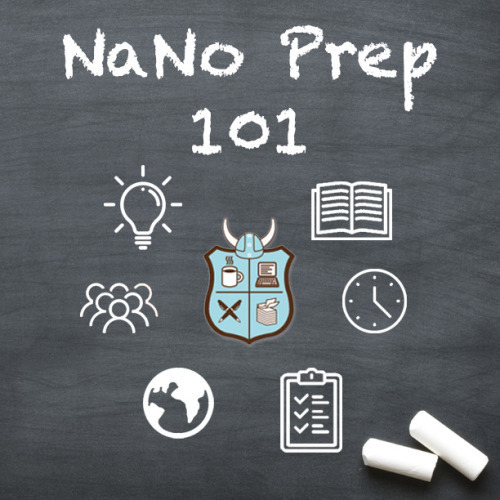 Hey Wrimos, did you know that NaNo Prep season is officially kicking off?
Hey Wrimos, did you know that NaNo Prep season is officially kicking off?A couple years ago, we asked a bunch of first-time NaNoWriMo winners one simple question: What went right?
There were so many interesting, thoughtful, and funny responses… and one major common theme: preparation. We used this feedback to develop NaNo Prep 101, a workshop course covering the major areas of novel prep: generating ideas, creating characters, plotting, world-building, community and organization, and time management.
Over the next six weeks, we’ll provide focused NaNo Prep activities for you to dive into. By the time November rolls around, we hope you’ll be more prepared than ever to reach 50,000 words on your novel draft.
September 14, 2020
"A reason to participate in NaNoWriMo: It’s an amazing opportunity to leap forward quickly on..."
-
Aya de Leon, author
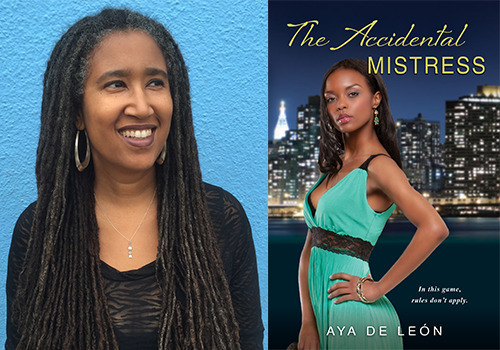
Why do you enjoy participating in NaNoWriMo? We asked some published NaNo Novelists to share what they like best!
September 11, 2020
Why One Voice Is Never Enough: Weaving Intersectionality into YA
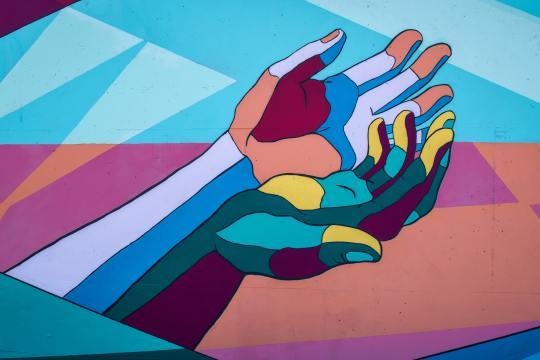
Humans are complicated and multi-faceted—and so are the best fictional characters who reflect the reality of what it is to be human. Today, writer Rachel Werner shares why it’s important to create intersectionality in the characters you write:
Does my protagonist get to be Black and have clinical depression? Be neuro-divergent and transgender? The default setting for writing diverse stories often presents as a “this or that” scenario, or leaves an author feeling as though certain demographic boxes need to be “checked” to ensure their book is perceived as inclusive “enough.” The fallacy to these mentalities is that neither is an appropriate benchmark to strive for.
Unfortunately, this is where numerous character compositions go hopelessly awry—ultimately undermining story arcs no matter how well they’re crafted. It’s not enough to simply make one’s heroine Asian or disabled, then proceed with the plot. What truly makes characters resonate with readers is complexity, usually achieved via intersectionality.
The Merriam-Webster Dictionary defines intersectionality as the “the complex, cumulative way in which the effects of multiple forms of discrimination (such as racism, sexism, and classism) combine, overlap, or intersect especially in the experiences of marginalized individuals or groups.” It also astutely credits the scholar and a civil rights activist Kimberlé Crenshaw who originated “the idea that when it comes to thinking about how inequalities persist, categories like gender, race, and class are best understood as overlapping and mutually constitutive rather than isolated and distinct.”
Crenshaw’s theory exposes the reality that those within BIPOC, LGBTQ+ and/or different-abled bodied communities rarely connect with a single identifier. Thus, a “White vs. Black” antagonistic premise set in suburbia now falls flat because a narrative should be based on more than blatant friction between teens with different skin colors.
“Representing experiences at the intersection of two or more marginalized identities is so necessary for children’s literature. Authors often hear that their stories (and their lived experience) are ‘too much,’ that a character cannot be both Black and Muslim, or both trans and Latinx, and so on. Authors come up against gatekeepers who want them to sanitize their work and remove an aspect of who the characters are or what the story is in order to make it more palatable and 'marketable’ to readers,” explains We Need Diverse Books Communications Manager Alaina Lavoie.
“But readers—kids and teenagers—live these experiences, and very rarely get to see themselves on the page. This could result in them feeling they need to sanitize part of their lives for others; someone might feel they need to be “less disabled” in order to be accepted by the LGBTQ+ community; or that they need to downplay or hide their Blackness to feel at home in Jewish spaces,” Lavoie states. “Books that center the multiply marginalized, such as Felix Ever After by Kacen Callender or Color Me In by Natasha Diaz, might be the very first time that a reader sees that they can show up as their full self, without trying to mask or change who they are in order to be accepted and seen.”
Lavoie’s insight into the current publishing climate is a crucial reminder that within no community does one word ever “fit all.” As a writer, I can personally attest to navigating what, at times, is a grueling creative process. The need for more representation in YA for people of color with mental health issues inspired my short story, “Brown Girl Blues”. Writing from personal experience can provided a feeling of connection for others, plus be cathartic for oneself. I’ve been in clinical treatment for an eating disorder off and on for over two decades. But I never read one book growing up that featured a young woman of color grappling with this sort of illness. Would it have made a difference? Perhaps. I may have felt less isolated or… “crazy,” since I was already coming of age in an environment in which mental health struggles weren’t openly discussed and acknowledged, aside from alcoholism or drug addiction.
The need for more own voices sharing real, lived experiences is one young audiences continue to crave. Challenge yourself to share the stories no writer other than you can tell. One day, a kid might thank you for it.

Rachel Werner is faculty for Hugo House and The Loft Literary Center; a We Need Diverse Books program volunteer; and a book reviewer for Shelf Awareness. She has contributed print, photography and video content to Fabulous Wisconsin, BLK+GRN, BRAVA, Madison Magazine and Entrepreneurial Chef. She is also the founder of The Little BookProject WI, a community arts and nonprofit bi-annual collaboration. A passionate commitment to holistic wellness and sustainable agriculture keeps her a Midwestern girl at heart—and Madison resident.
Top photo by Tim Mossholder on Unsplash (mural painted by Annabelle Wombacher, Jared Mar, Sierra Ratcliff and Benjamin Cahoon).
September 9, 2020
Would You Like to Write for the NaNoWriMo Blog?
No one knows NaNoWriMo like the people who participate! We’re looking for Wrimos to contribute to our blog for some upcoming series.
Interested? Just fill out this form, and we’ll get in touch if we think you’re a good fit! (Please note that we receive a high volume of interest in writing for the blog, and may not be able to respond to everyone. This is currently an unpaid opportunity.)
Are you a Young Writers Program participant? Fill out this form instead so we can make sure that we attribute you correctly!
September 3, 2020
You Can Now Announce Your 2020 NaNoWriMo Project!

Under the bed. Sitting idly on a coffee table. Floating in a starry sky like an astronaut marveling at the beauty of the universe. Where will you find the seed of inspiration for your next novel?
Plot twists, characters, and brave new worlds await in the most mundane places, glittering with the possibility of your creative touch. The magic of your story exists in the everyday, in the nooks and crannies of your life, no matter how ordinary your surroundings are. Get ready to let that magic bloom!
You can now officially announce your project for National Novel Writing Month 2020! Make a promise to your creative self to find those seeds of story magic and write a novel this November.
Announce Your 2020 NaNoWriMo Project!Explore what the NaNoWriMo site has to offer:
Join a region to find virtual events run by your local volunteer. Find your region here, then join it to get updates from your local Municipal Liaison!Say hello in the forums, and find support and resources. If you’re just getting started, check out the Newbies forum to say hello, the Coffeehouse to check out the conversation, and the Reference Desk forums for any research help for your writing project.
Get ready to write with NaNo Prep 101. Our workshop will help you get ready to reach 50K in November. Starting September 14, we’ll have themed weekly resources, events, and discussions to help you dive into your story. Or, you can visit the NaNo Prep page and do the exercises at your own pace!
Find exclusive deals for NaNoWriMo participants. Every year, we partner with some incredibly generous sponsors. Check out our offers page to find deals on writing software, publishing resources, writing communities, and more!
[Image description: An illustrated banner that reads “National Novel Writing Month 2020″ in letters that look like they’re an old-fashioned glowing movie marquee on top of a brick building. In the background, an astronaut floats in a night sky among the stars; a red and yellow ringed planet is in the sky opposite]
August 27, 2020
Are you a Planner or a Pantser?
Do you like to plan your novel out ahead of time, do you wait to start writing and see where the muse takes you, or do you do a little of column A, a little of column B? It’s time for a PLANNERS vs PANTSERS vs PLANTSERS poll!
— NaNoWriMo (@NaNoWriMo) August 27, 2020
August 17, 2020
“Storytelling is a powerful act. Stories have the mysterious...
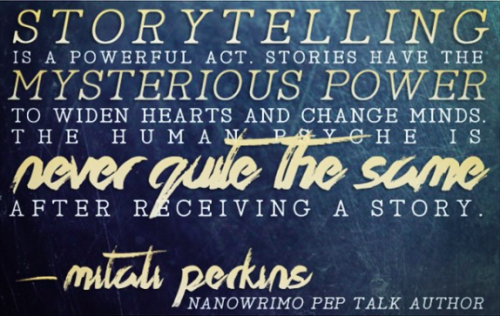
“Storytelling is a powerful act. Stories have the mysterious power to widen hearts and change minds. The human psyche is never quite the same after receiving a story.”
—Mitali Perkins, NaNoWriMo Pep Talk author
August 13, 2020
We know that going back to school looks a little different this...
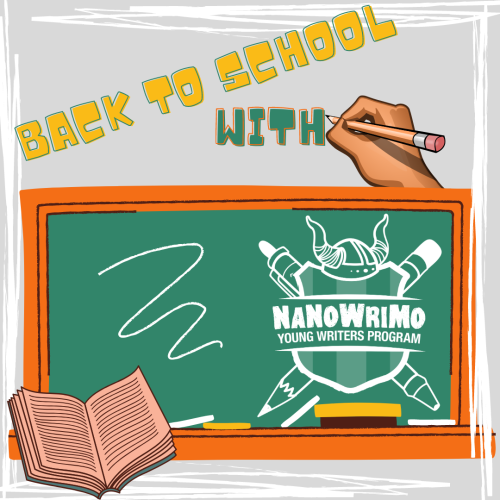
We know that going back to school looks a little different this year. If you’re a teacher trying to create a plan that can pivot between online and in-person education, or a parent who is looking for resources to help round out your distance learning options in the coming months, check out NaNoWriMo’s Young Writers Program!
Facts about the Young Writers Program!
The Young Writers Program website has seen an increase of 43% in users from April—July so far compared to last year as more people look for structured online learning opportunities.35% of educators who participate in the Young Writers Program work at schools with school-wide Title 1 funding.
52% of Young Writers who participate in the YWP are BIPOC. We’re working hard to make our programs more accessible, in particular by translating our free workbooks for young writers into Spanish.The YWP website provides online classrooms for educators and parents, suitable for distance learning. They include progress-monitoring tools, a discussion platform, and a messaging system.
Chris Baty's Blog
- Chris Baty's profile
- 63 followers



